Ways of creating a backpack sewing pattern
Backpacks remain in trend for a long time. Handmade backpacks, being unique, are valued most highly. A sewing pattern, suitable fabric, and decorations are all you need to create a stylish backpack at home. A creative approach and the enthusiasm of the seamstress also contribute to the success of the matter.
Preparations
In order to create a backpack by hand, you’ll need:
- A needle
- Threads
- A thimble
- Scissors
- Fabric
- A piece of dry soap for drawing.
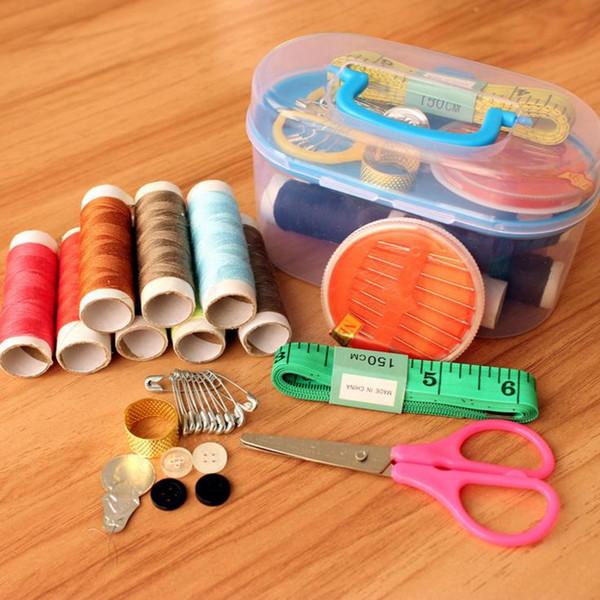
Best fabrics for a backpack:
- Denim (without elastane);
- Cotton — it breathes, maintains shape and is agreeable to the touch, an important point as you will wear it on your back;
- Dense synthetic fabrics — they come in handsome patterns, bright and printed. Bags made of such fabric do not need additional decoration.

Make sure that the fabric doesn’t stretch too much under the strain and doesn’t crumble on bends. One disadvantage of synthetic fabrics is their ability to absorb smells. A synthetic backpack also feels unpleasant on the back in summer. Synthetic fabrics don’t breathe; they also hold water. You may use this to your advantage, making your bag double-layer to protect things in it from rain.
For the lining, the following fabrics are most common:
- Satin — dense, reliable, and wear-resistant.
- Rayon — even more reliable than the satin.
- Cupro — similar to natural silk, soft, and stretchy.
- Polyester — durable and undemanding fabric, mud-resistant.
- Sateen — made of cotton and silk threads.
- Netting — has holes, breathes.
- Taffeta — a coarse fabric that maintains shape.
Now, all that’s left is to decide how to sew a backpack without expensive garment accessories. You may create your own or take accessories off an old bag, coat, and other such things.
You may use these for decoration:
- Belts, buckles, and other fasteners ripped off the old clothes.
- Leather or fabric fringe.
- A bunch of twisted colorful yarns (they will serve as strings).
- Curious-looking buttons, beads, and rhinestones.
- Ropes of various diameters and colors.
- Felt appliqué.
- Quilt, ribbon embroidery.
- Decorative zippers.
Choosing decorations, you must keep in mind that they will be subjected to intense wear and tear and soil, too. So unpleasant when a ruined appliqué or a lost bead makes the whole garment unusable. Detachable garment accessories make washing much easier and allow you to revamp your old item in a simple way — by changing the color of a cord, for instance.
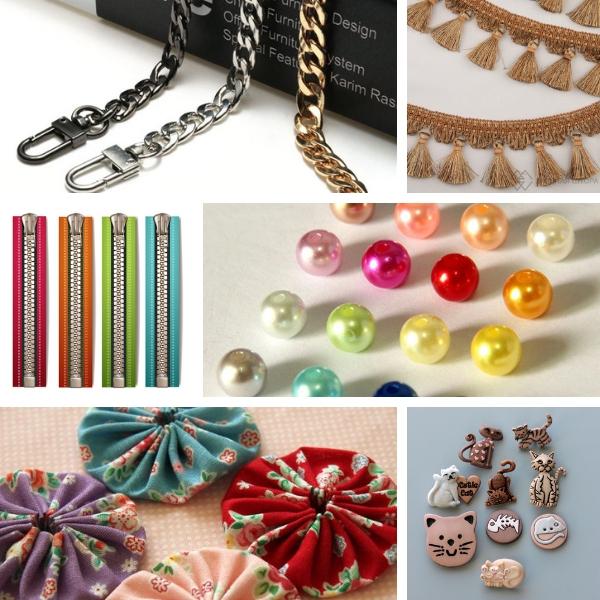
You can create a hand-made backpack in two different ways: using your embroidery machine or your own hands. The first way is quicker and easier.
Tools and materials:
Dense sewing fabric
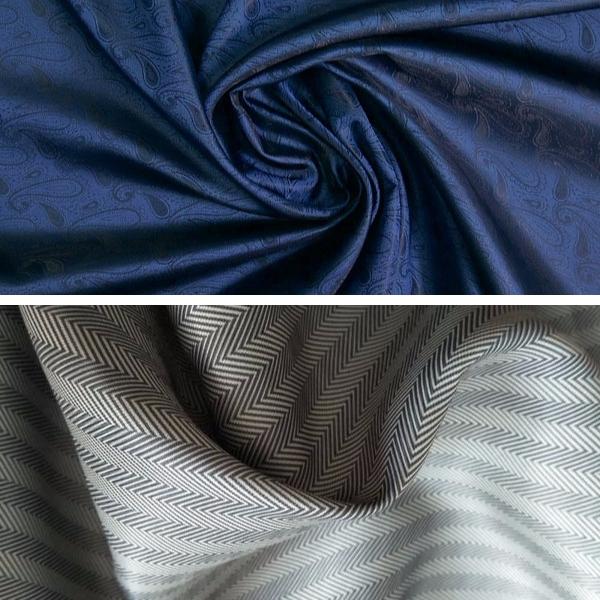 title="Capro and polyester fabrics"
title="Capro and polyester fabrics"
The lining: cupro and polyester

The lining: satin and rayon
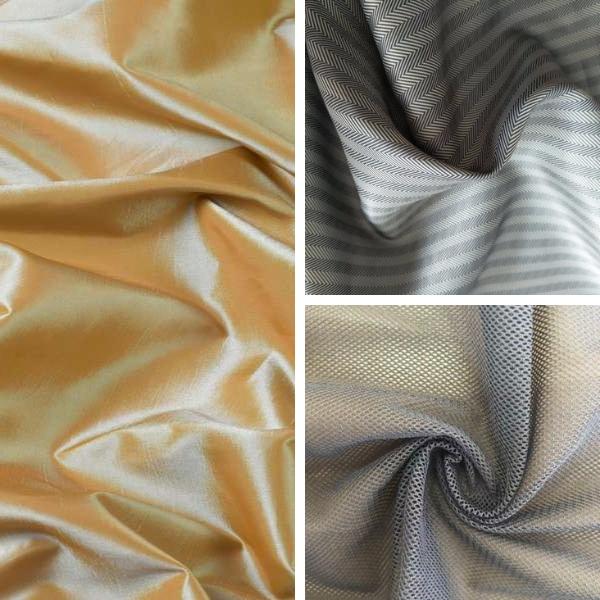
The lining: taffeta, netting, tulle netting
Garment accessories
How to use a sewing pattern
If a newbie seamstress doesn't know how to sew a backpack with her own hands, a step-by-step guide and a sewing pattern is a must. They will help to bring her project to life. There are ready-made easy-to-transfer full-scale sewing patterns with measurements.
To draft your own pattern, you’ll require the following:
- A sheet of paper (you may use tracing paper or a newspaper instead)
- A pencil
- A measuring tape
- A ruler
- A triangle ruler
A French curve for rounding corners can be made by hand. Draw a circle on a piece of cardboard with an 18–20 cm radius and cut out one-third of it. With such a contrivance, you will be able to make symmetrically rounded corners.
To draft a simple backpack sewing pattern, you’ll only need two measurements:
- shoulder width;
- center-back length from the natural neckline to the waist.
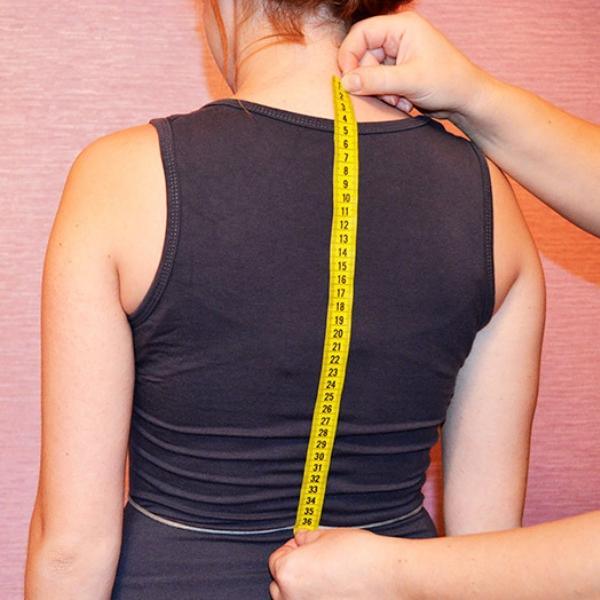

On paper, draw a rectangle, its width less than your shoulder width. An important point: the backpack should not go below waist level, it would be inconvenient to wear. After that, draw a vertical line through the center of the rectangle — the center axis. Now fold the paper along the axis and draw the preferred outline of your backpack. Cut along the outline to get a symmetrical pattern piece. If you plan to attach things like pockets or cover or a movable bottom, it would be easy to mark them on the basic pattern, adjusting the sizes.
In order to decipher the pattern, you need to learn the key notations:
- The line with the arrow — lengthen.
- The line with small triangles — the joining line is here.
- Identical numbers in the inner area — these pieces match together.
- The crosses work as alignment marks.
- The arrow between the lines is a place for a ruffle.
- A crisscross is the place for a button.
If you've decided to use a ready complex pattern, you’ll need to enlarge it. On the pattern, measurements are given in cm. In this case, it’d better to use a dense fabric instead of paper. The cutouts are placed on top of the fabric and traced with a piece of soap, sharpened on one end. Before cutting out parts of the pattern, make sure that seam allowance is included. More often, it isn't, and therefore, you’ll need to add 1–1.5 cm on all sides. Sometimes the enclosed seam is used — first, the fabric is folded the wrong side out and stitched, then turned right side out and stitched again. Seams executed in this fashion look neat and add support to the backpack. They require a larger seam allowance.

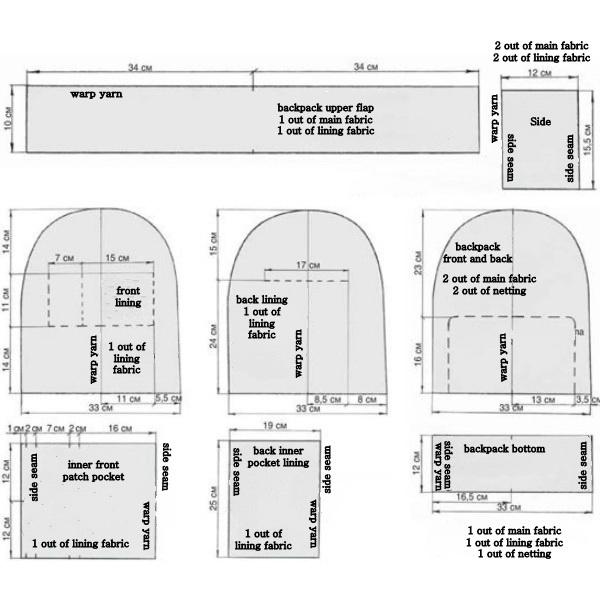
Making a sewing pattern according to the model
Sewing your own backpack allows you to choose any model you like. What you need to understand that copying the manufactured models may be futile, due to the lack of the frame and finishing (plastic edges, metallic corners, coarse bottom, etc.). Even if your pattern is accurate, the backpack might turn out quite different.
The advantage of homemade backpacks is the individual approach that makes them stand out. It improves the overall imagery, visible in decor and unusual joining seams.
Backpack for kids
Kids like backpacks shaped like animals. Bunny ears or button eyes are easy to attach, and will make a child happy.
On a basic pattern, the upper part must be narrowed. The backpack should resemble a triangle with its apex facing upward. The bottom is made according to the pattern. You can make it two-part, joining the pieces accordion-style and strengthening the edges with a cord.
The upper part will be gathered with a cord; to prevent the things from falling out, a flap cover may be added. Pom poms look marvelous on kids’ backpacks.
If the kid will wear it to school, you may add the compartments with fasteners for books and exercise-books. Use thin fabric that doesn't soil easily. A detachable lining will be easier to wash.
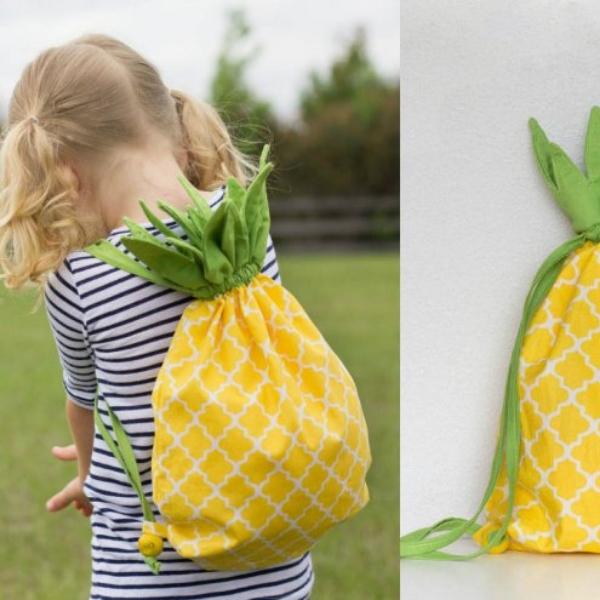
Sewing a pineapple-shaped backpack
Cut four rectangular pieces, two out of your main fabric, two out of the lining fabric.
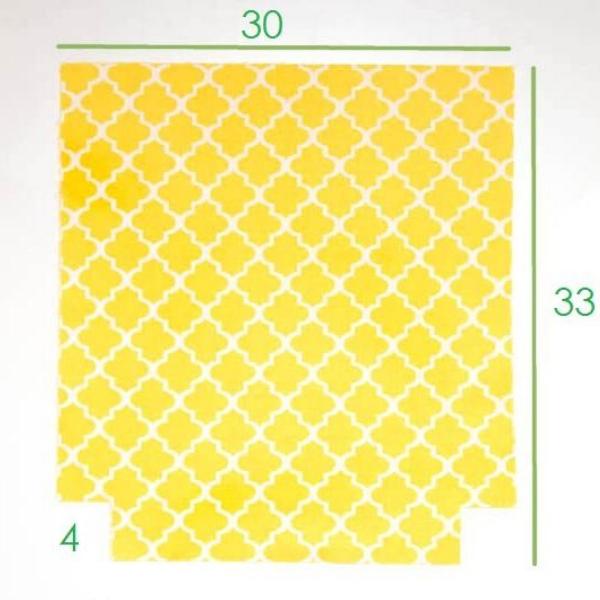
Cut and stitch the future rings for the cord.
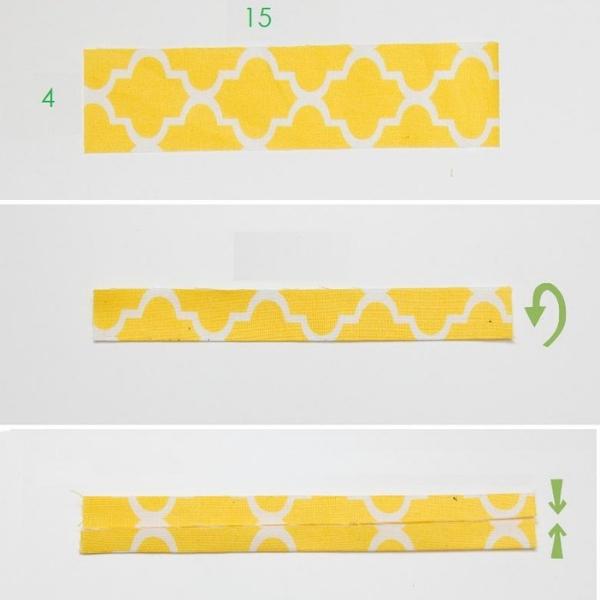
Stitch the rings to the main part of the backpack.
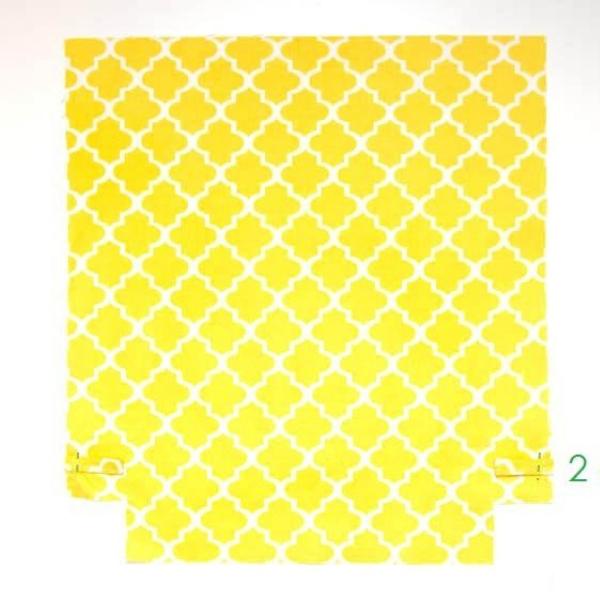
Cut and edge finish two rectangles.

Join the main part to the rectangular pieces and stitch the base.
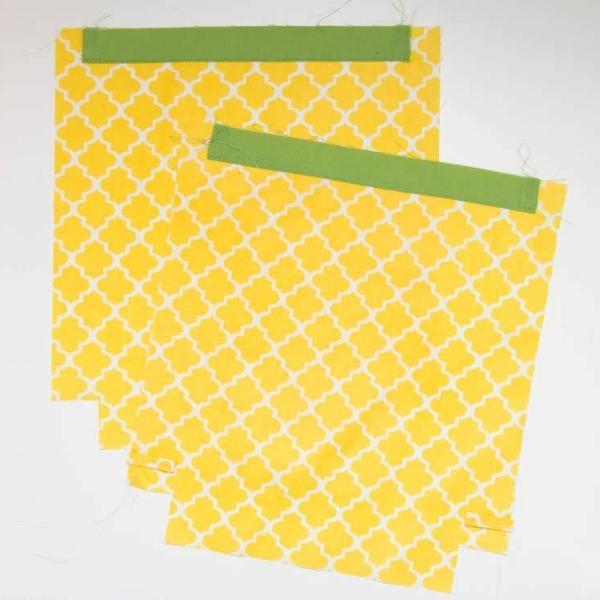
Align the openings, pin, and stitch.

Prepare the four rectangular pieces, draw the lines and stitch.
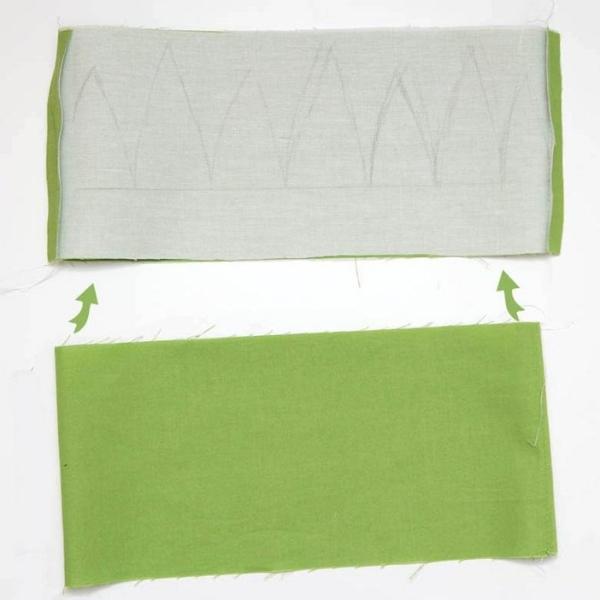
Cut out the pineapple crown.
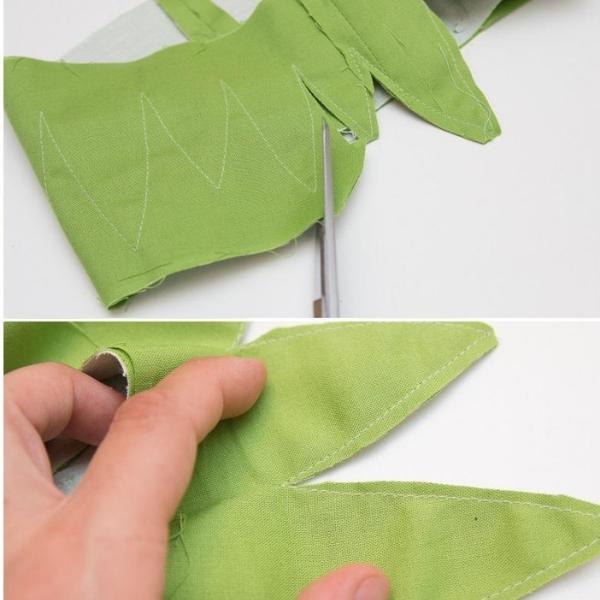
Join the lining to the main part.
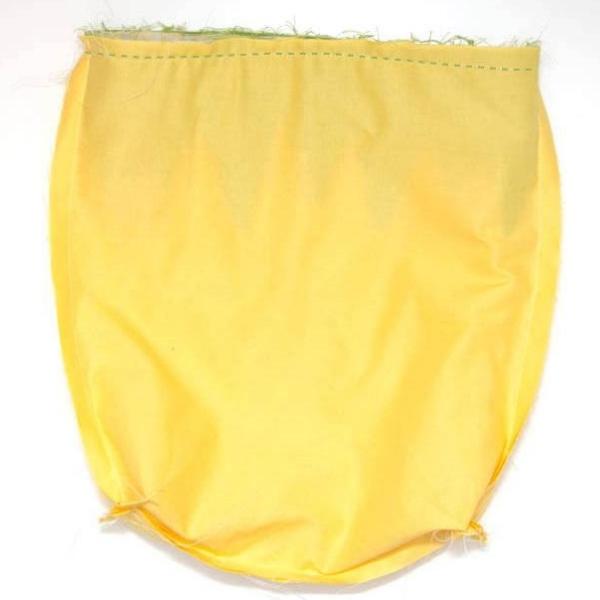
Join the lining to the main part.
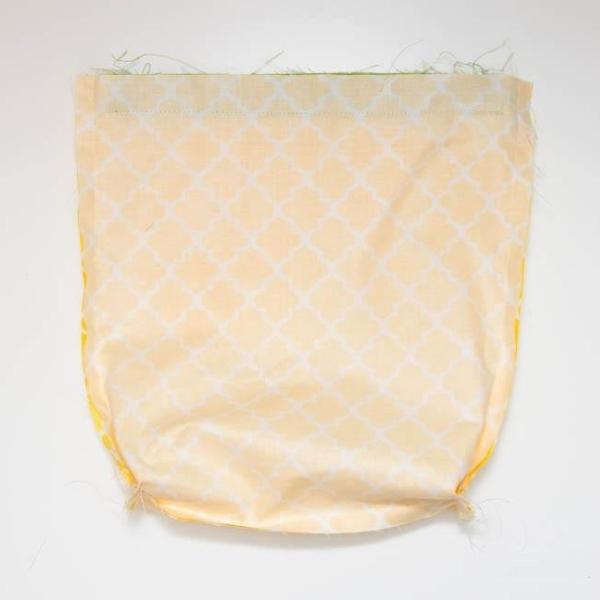
Insert the cord (a ready one or made by you).

Draw the cord through the rings and fix them with a clamp.

Drawstring bag
The most convenient shape for a hand-made backpack is a drawstring bag. It is a godsend for creative people. A simple structure leaves room for creating images, from dreamy and romantic to ascetic ones.
A drawstring bag is a sack with strings on top and shoulder-straps. A well-known, traditional shape. A sewing pattern for such a bag is rectangular. The bottom edges may be rounded or left as is. The size depends on the maker’s wish.
The upper part is not narrowed down, as it is gathered with the strings. The fabric should be soft, that ruffles beautifully — in that case, the upper part, folded like a hand fan, will be a decoration in itself.
- Romantic drawstring bags are ideal for slim young girls. You may decorate them with pleated straps, and to attach a fringe with beads to the edges.
- For a mature woman, a backpack bag may be made into a carry-all. The color of the bag should harmonize with the dress, and a brightly colored neck handkerchief may be wrapped around her neck and shoulders.
- A khaki drawstring bag is fine for men who prefer casual style. A drawstring bag made of thick water-repellent fabric will be indispensable while hunting, fishing, or just hiking.
Thick ropes may be used instead of straps. You don't even need to sew them. Colorful ropes for women and restrained sole-colors for men. You may adjust the strap length simply by tying up the two ends where the knot will not rub sore. Straps like that make the backpack look stylish.
A shoe bag made of an old pair of jeans:
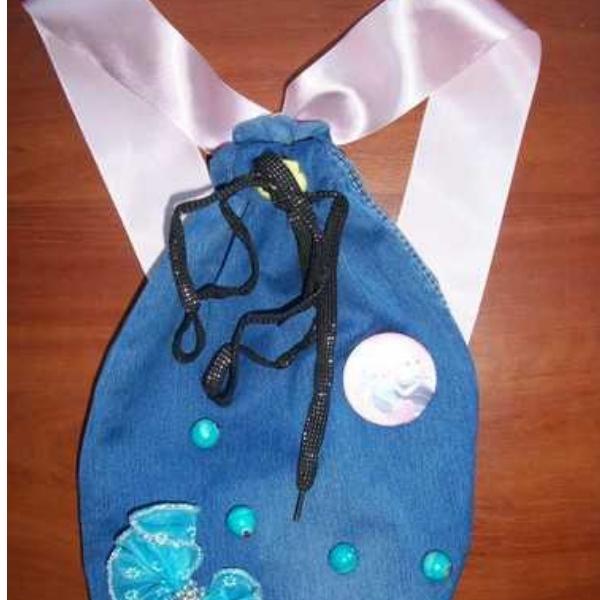
The necessary materials

Shape and sew the bottom.
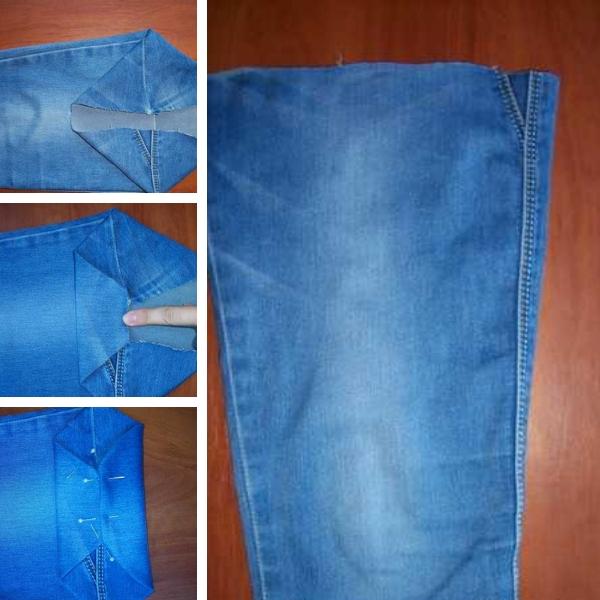
Shape and sew a pass-through for the string.
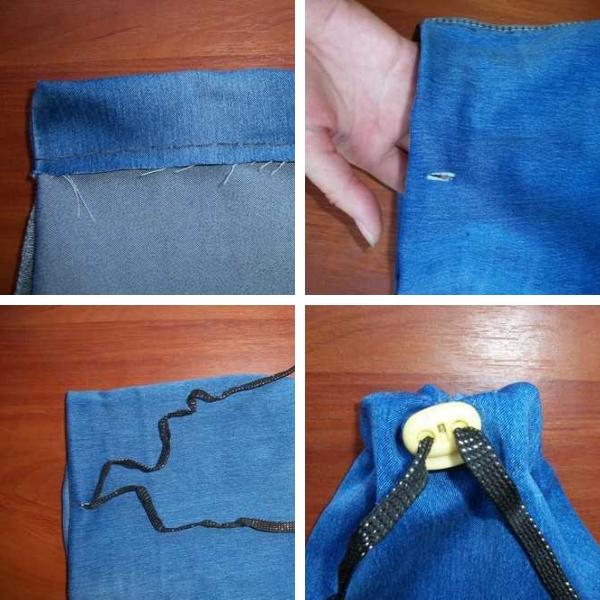
Sew the ring for the ribbon.
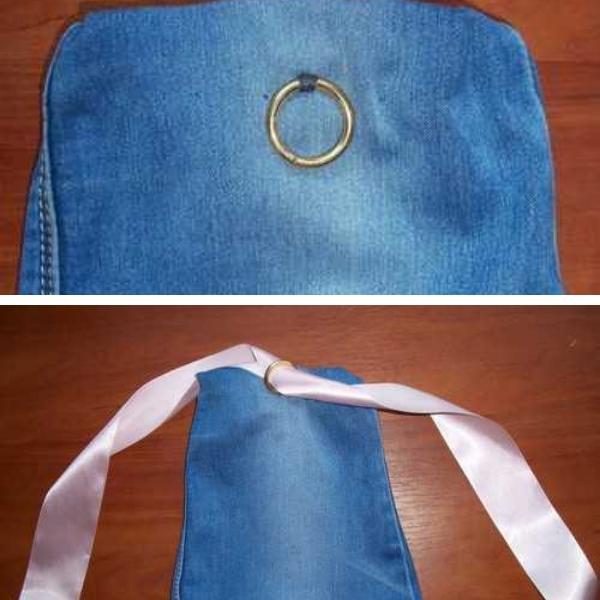
Stitch the ribbon at the bottom. They will serve as straps.

Backpack made from an old pair of jeans:

Many people ask how to make a backpack without a sewing pattern. If you don’t have a ready sewing pattern, you can draft it yourself or find a tutorial that shows approximately what you want and take the pattern from there.
The easiest way is to make your backpack bottomless. In such cases, a front part of the backpack is enlarged to serve as the bottom as well as the front. The following measurements are approximate, you’ll need to make some changes to them in order to suit the pattern to your tastes and needs.
- The back part, slightly narrowed down — 26 cm wide. You may add about 3 cm on each side in the middle.
- The front part is cut as a semicircle with a 38 cm radius.
- The flap cover is rounded. It should be one part with the back. It should drape freely and elegantly onto the gathered top.
- The straps are made of denim. If you don't have a sufficient amount of material, you may substitute denim for a decorative cord.
- If wished, a hanger is attached, so that the backpack is easy to pick up.
The center of the semicircle and the lower edge of the back part are aligned along the vertical centerline of the pattern. The edges of the semicircle are stitched to the back part. The upper part of the backpack is gathered with strings and covered with a flap. The straps are stitched to the upper and the lower edges of the back part.
For this model, you’ll need a very wide piece of fabric. If you don’t have a sufficiently wide piece, you may sew it from pieces, because this type of backpack may be quilted.
A backpack from an old pair of jeans
Draw the parts of the future backpack.
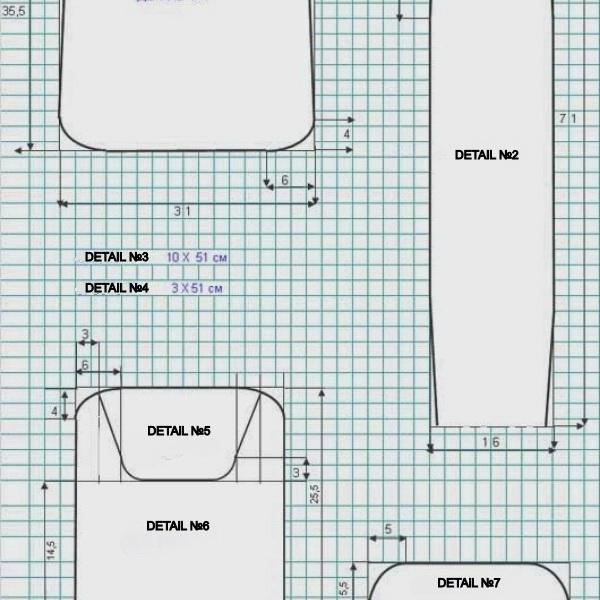
Cut out the pattern.
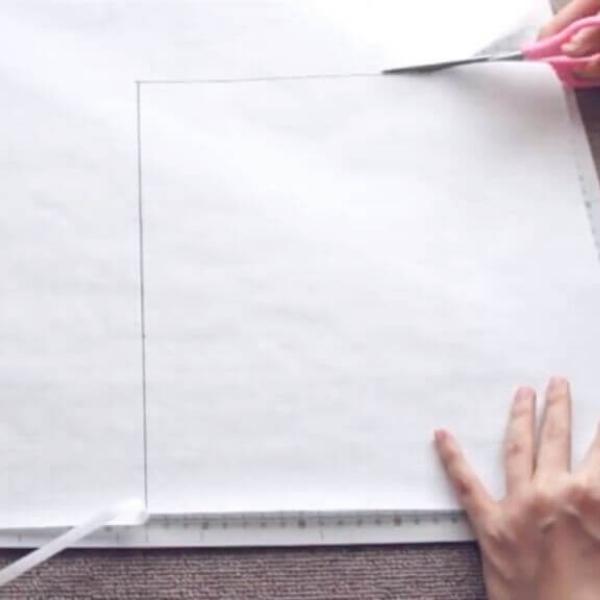
Sew the bottom, the parts, and the flap.
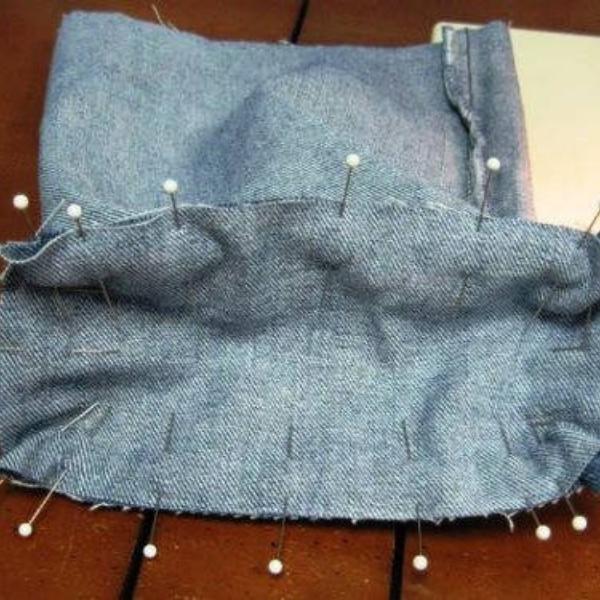
Attach the denim straps.

Sew the handles, if necessary.

The fabric should not be threadbare.
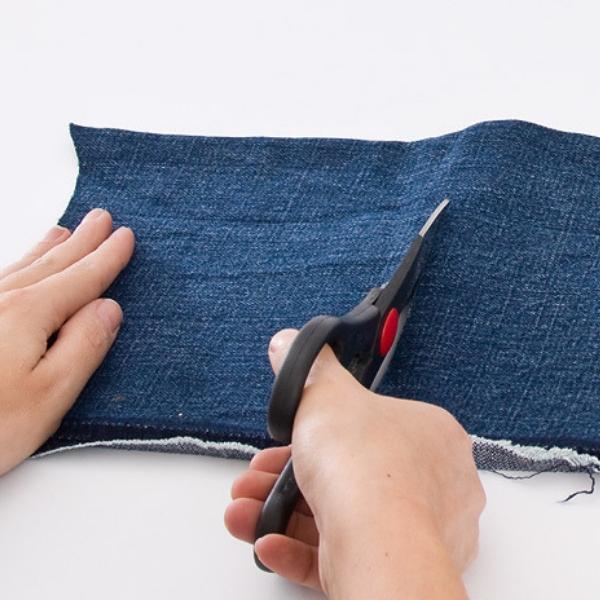
Patchwork backpack
Being skillful at patchwork allows you to create beautiful garments out of scraps. You can join the fabric pieces haphazardly or create a particular pattern.
It is not rational to cut the existing length of fabric to pieces, better to use the trimmings and leftovers already accumulated. For this reason, don’t try to make a facsimile of a backpack you’ve seen somewhere. Instead, find the backpack you like, alter it to suit your needs.
A patchwork backpack without a bottom may be decorated according to your tastes. For example, a flap can be rendered as a divergent beam of light or a cluster of petals. The straps might be made of horizontal strips or pleated. The front part may be sole-colored or contain vertical insets that look beautiful between the pleats.
Before sewing a new backpack, you should make a sewing pattern. Just draw the shape of the future item on paper, then cut and trace the pattern to the fabric. Don’t be afraid to spoil the materials in case something goes wrong. Failure helps you to master the necessary skill.
Stitching the scraps of fabric into one piece.

Cut the fabric according to the simple pattern.
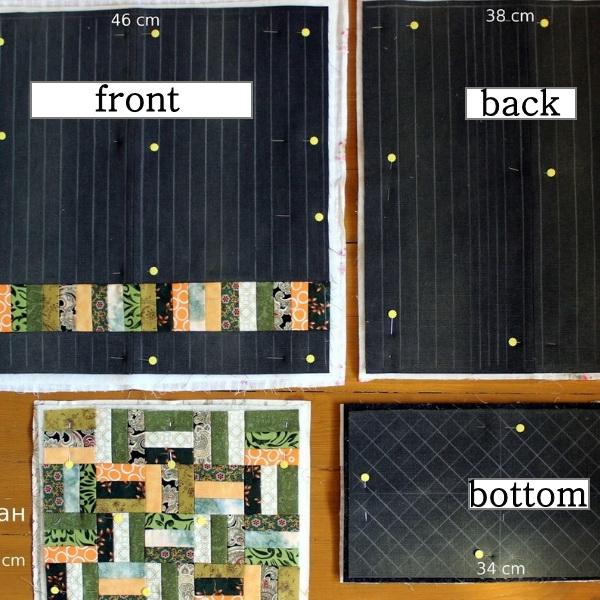
Out of the patchwork piece, prepare the flap with the clamp.

Make the slash pockets with zippers on the front part.
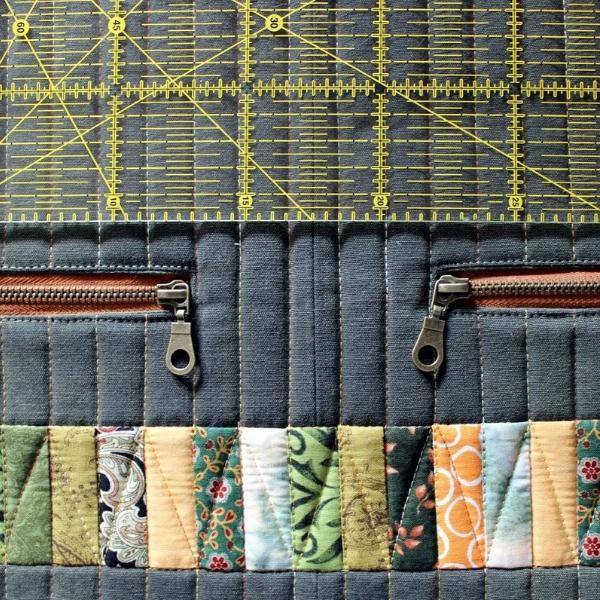
Slash pockets from inside:
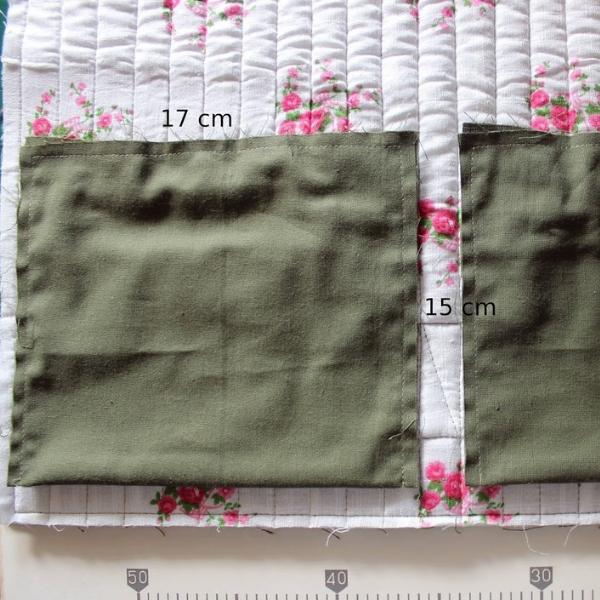
The front and the back parts remain sole-colored.
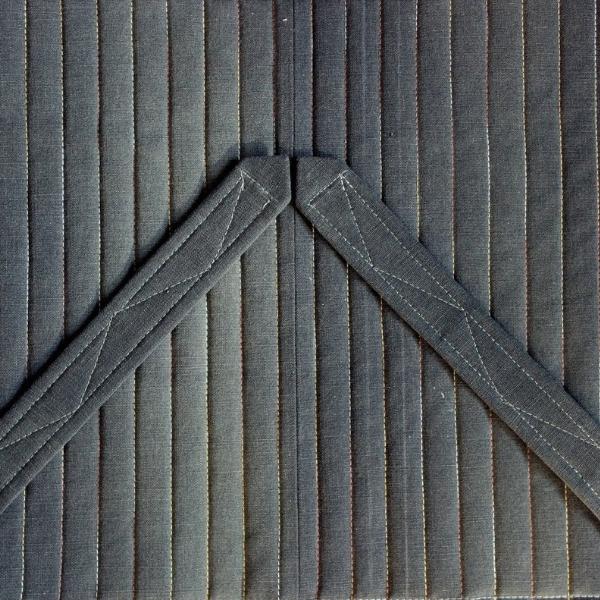
Sew the hanger, the flap, and the straps.
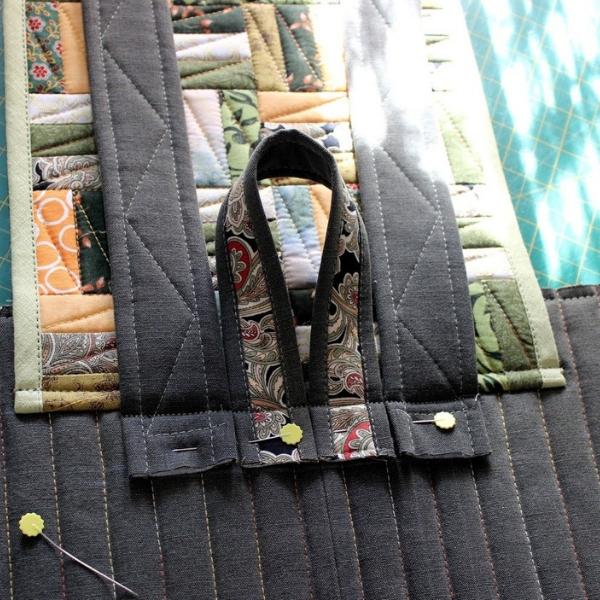
The back part and the lower part:
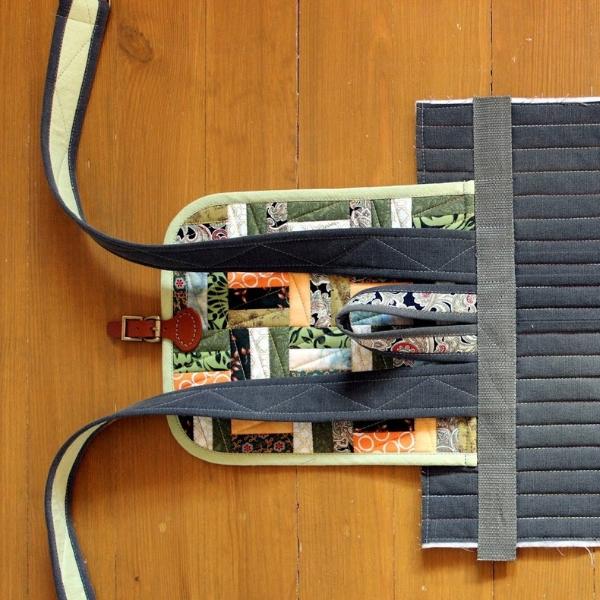
Join the front part to the back.
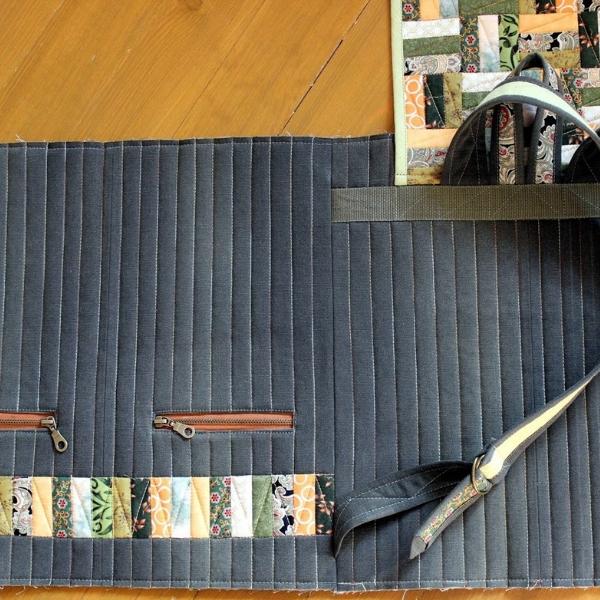
Draft the pattern of the bottom.
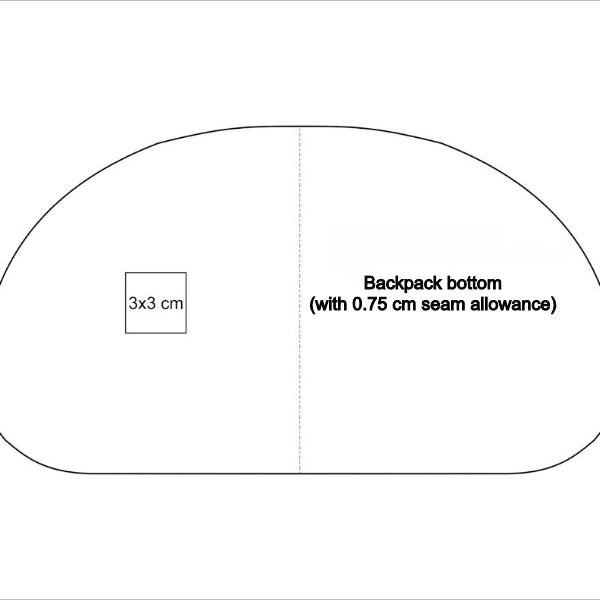
Sew the bottom as pictured on the pattern.

Sew the bottom to the front.
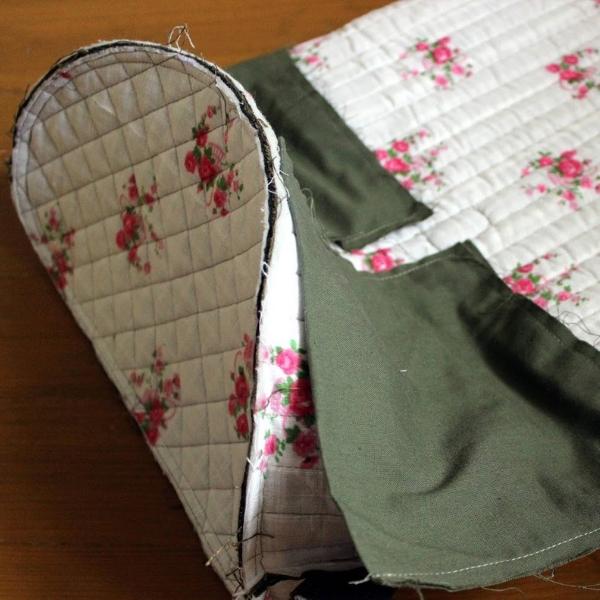
Prepare the lining.
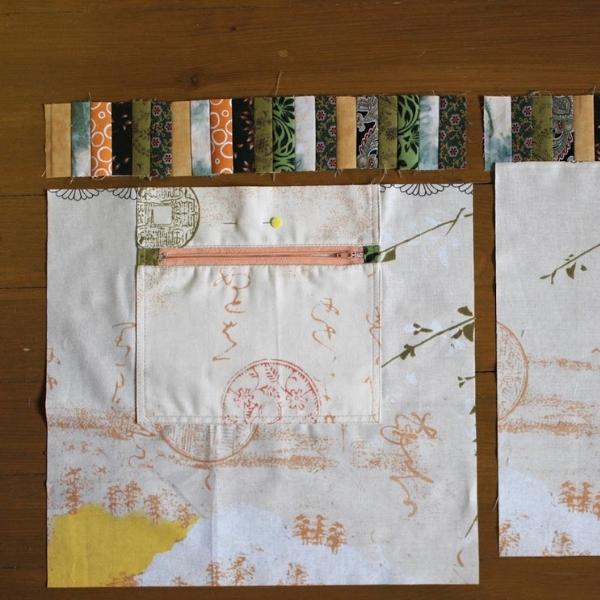
Sew parts of the lining.
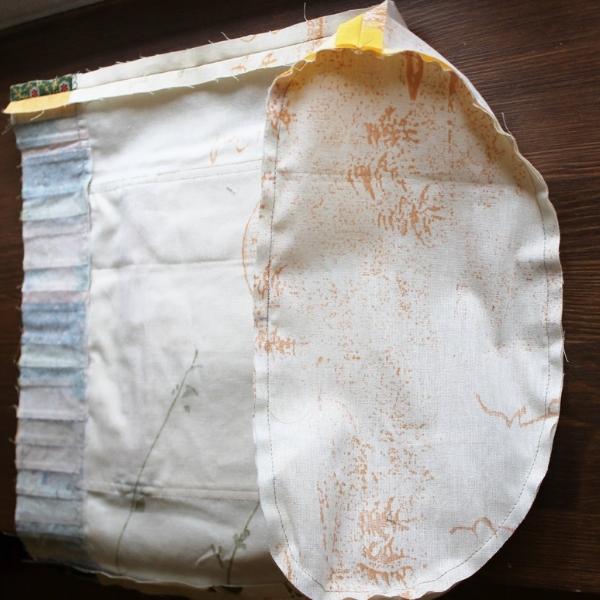
Sew the base and attach the upper flap.

Stitch the edging.
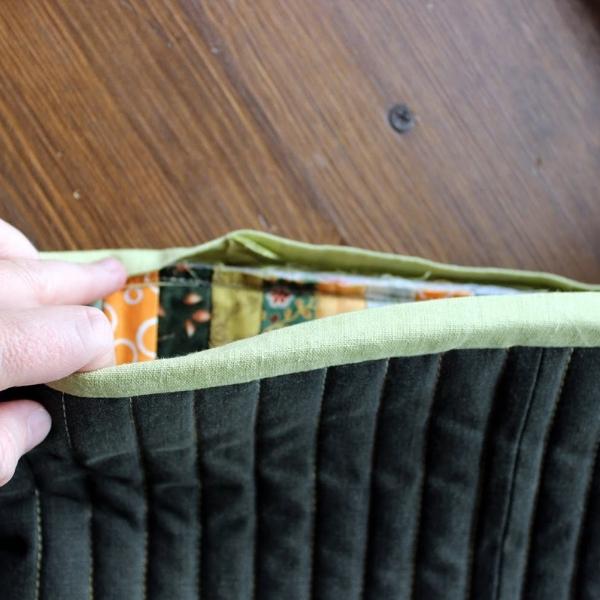
A ready model should be supplemented with a cord.

Make the openings for the grommets and draw the cord through them.

A ready patchwork bag:
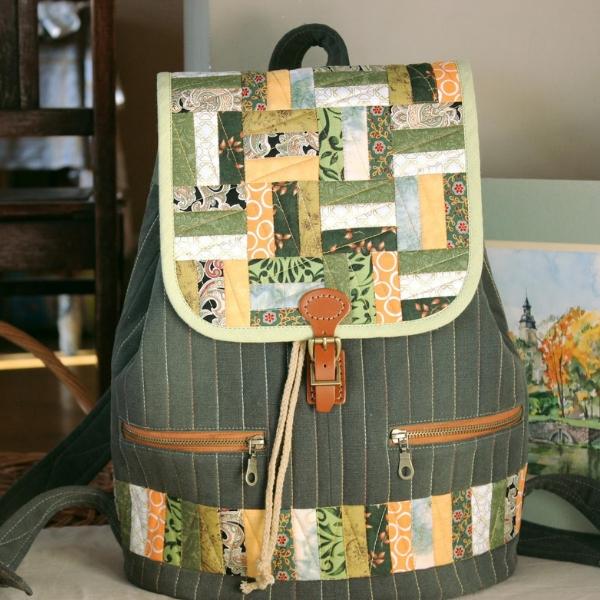
Original text by sumki.guru
 title="Owl backpack"
title="Owl backpack"
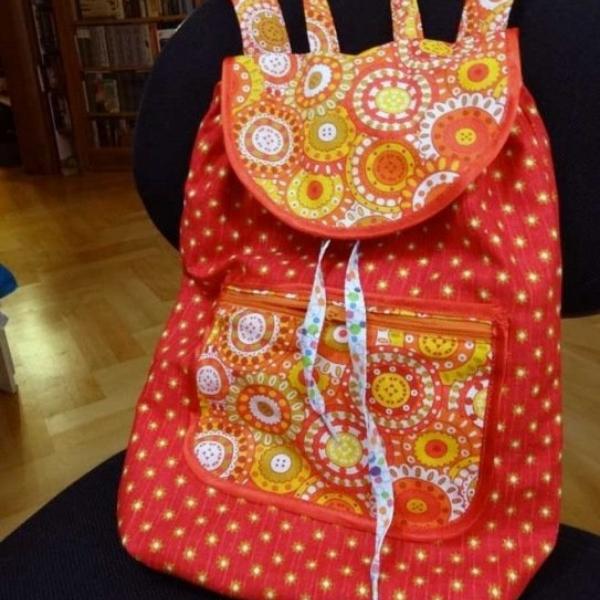

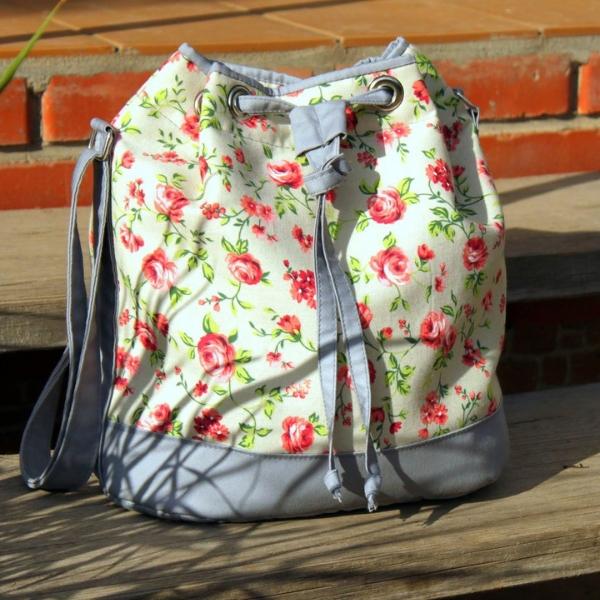
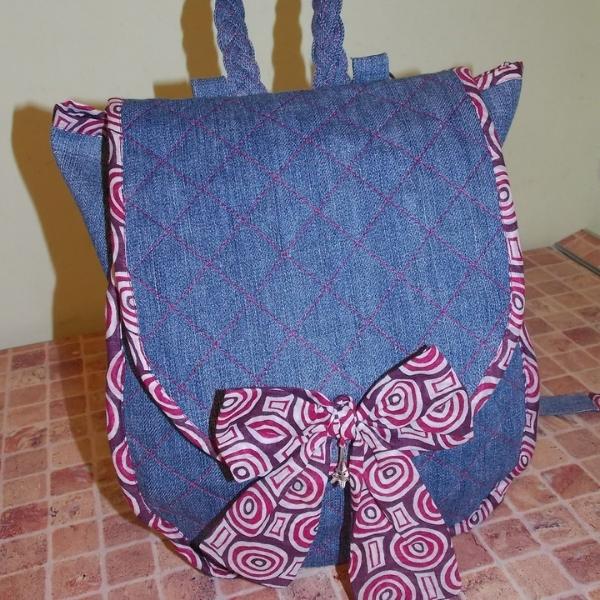
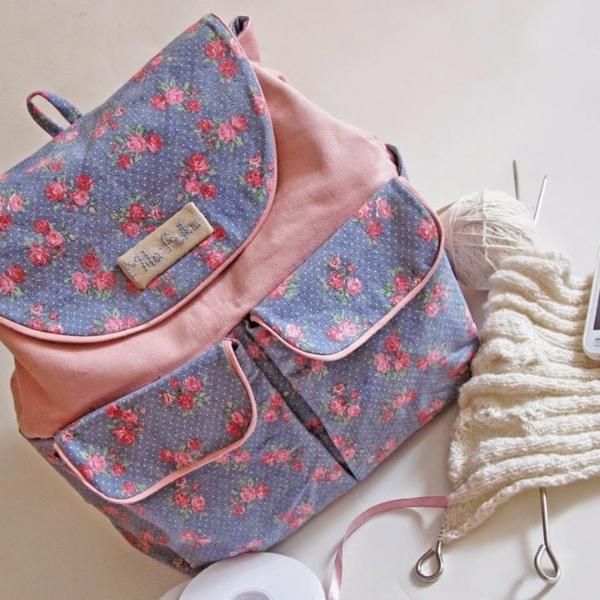

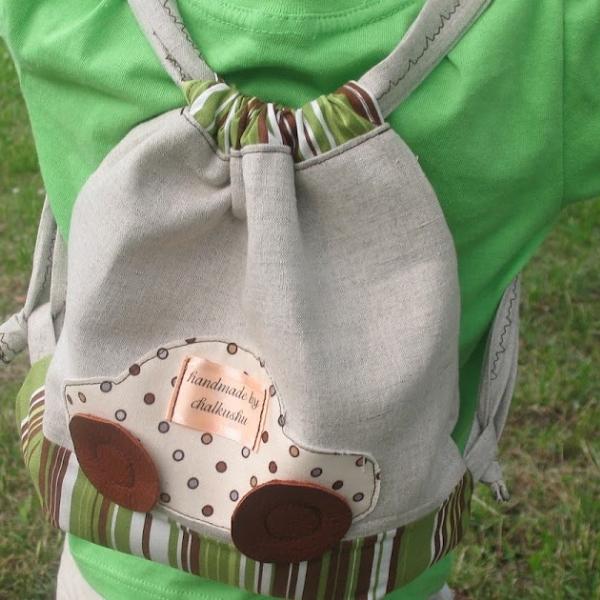




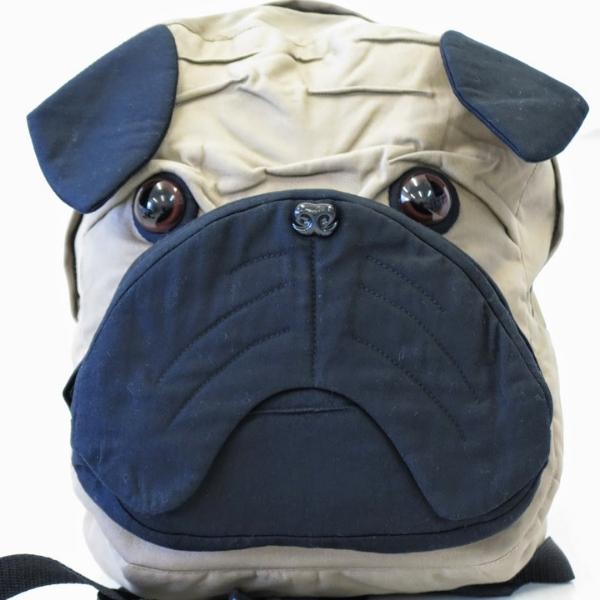
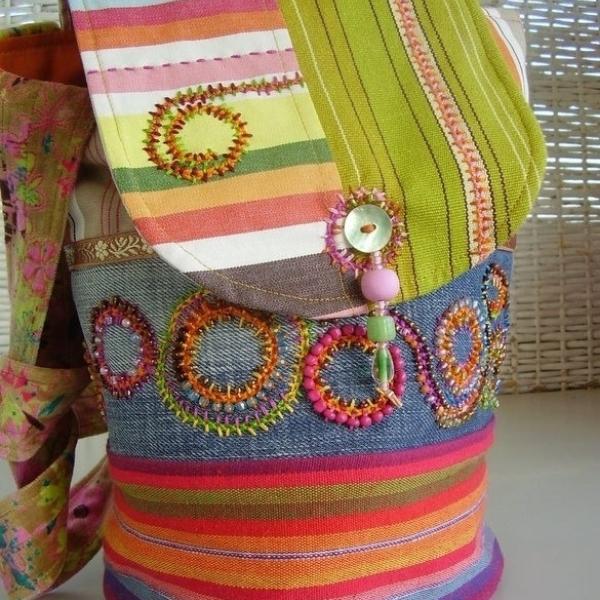
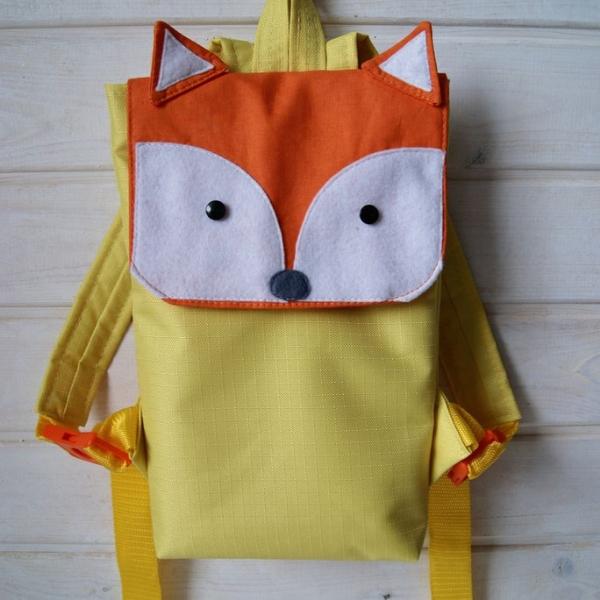

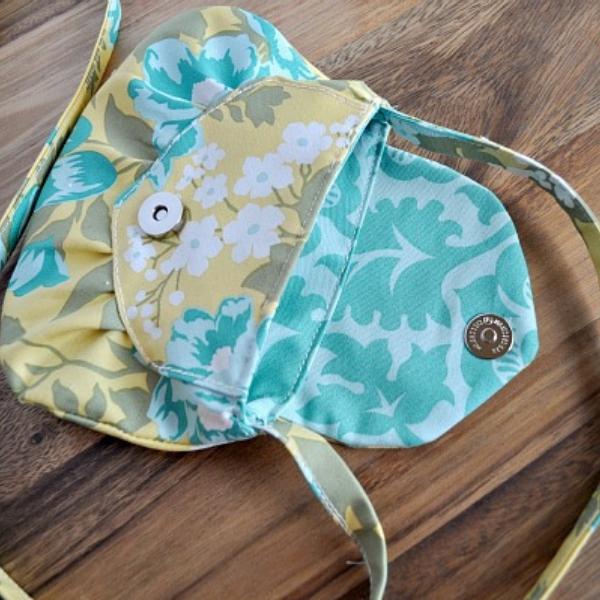
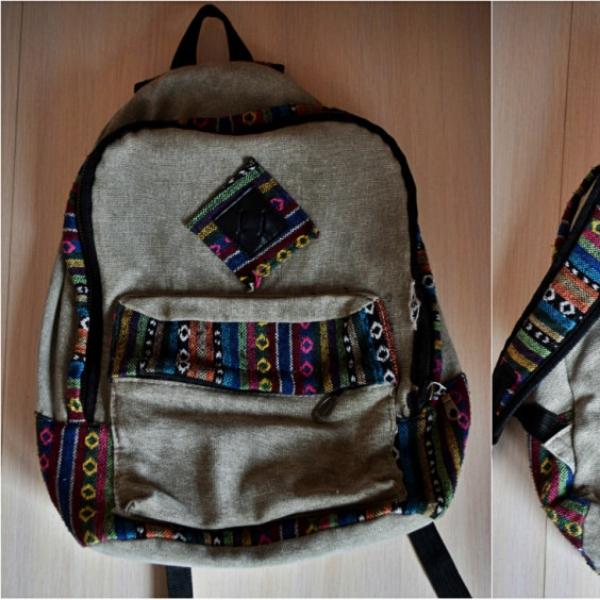
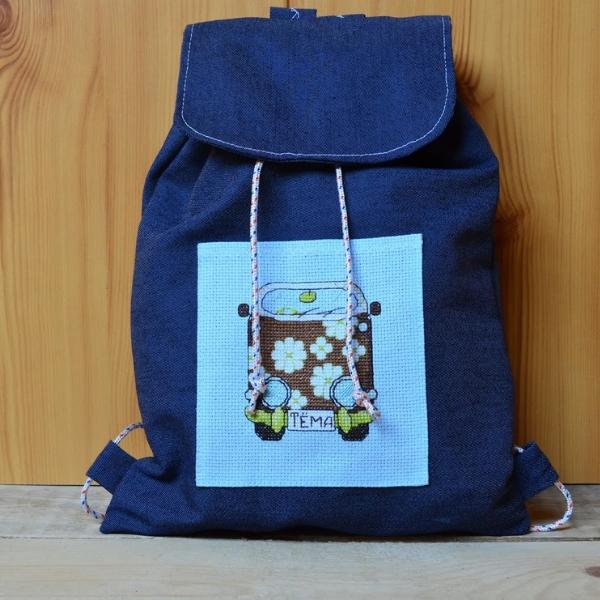


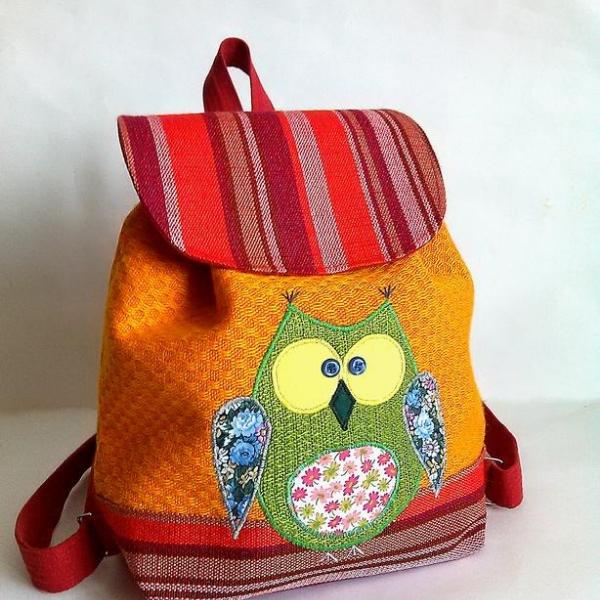


There are no reviews to display.